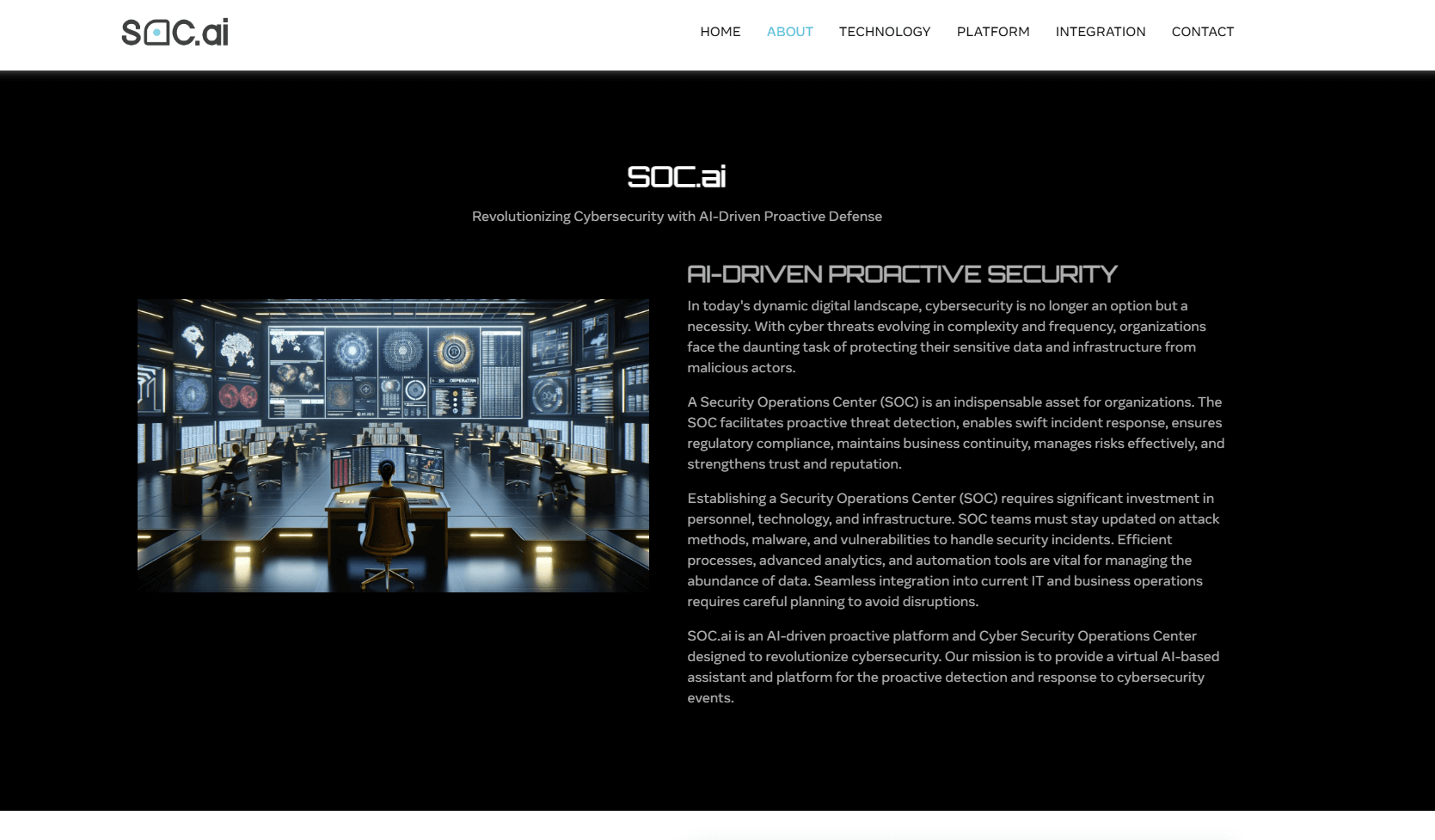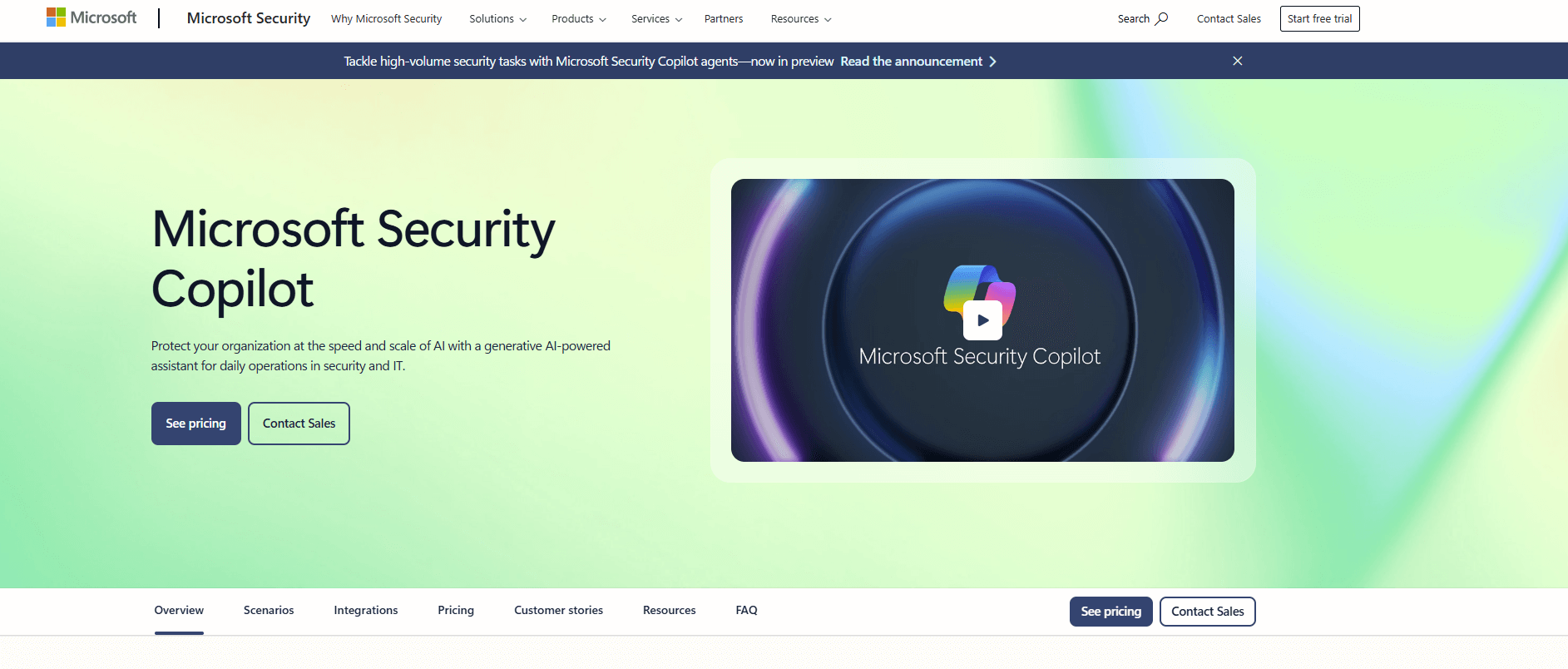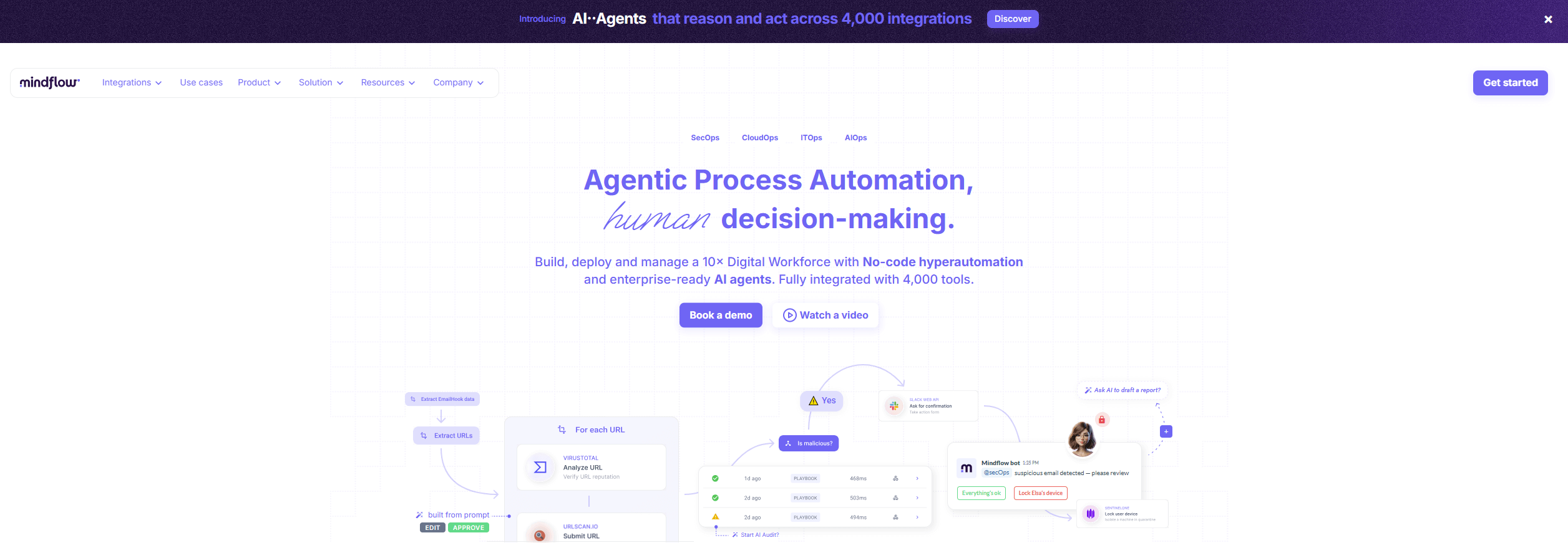Most teams discover alert fatigue during a real incident handoff at 3 a.m., not from quarterly SIEM dashboards. Working across different tech companies, I have watched junior analysts drown in low‑value alerts while seniors scramble to stitch identity signals to EDR telemetry and email traces. Three concrete time sinks keep repeating: phishing triage across multiple queues, correlating sign‑in anomalies with endpoint detections, and running error‑prone SOAR playbooks that lack context. The average breach cost hit $4.88 million in 2024, which makes small efficiency gains matter a lot, according to IBM's Cost of a Data Breach Report.
Global security and risk management spending was projected to reach $215 billion in 2024, per Gartner's forecast. I analyzed 12–15 platforms that pitch "AI for the SOC," then narrowed to five that show clear, verifiable capabilities and traction. You will learn which assistants actually cut triage time, where consumption pricing saves or hurts, and how to pick based on integration depth, autonomy level, and deployment constraints.
ClearSkies AI SecOps Assistant

Built‑in virtual analyst inside a TDIR platform that enriches alerts, proposes investigation steps, and adapts scoring to your environment. The assistant emphasizes private deployment with in‑house models and right‑click investigations.
- Best for: SIEM and TDIR teams that want an embedded assistant, especially where private, offline model handling is a requirement.
- Key Features: AI‑enriched triage, adaptive alert scoring, suggested investigation steps, right‑click incident creation, in‑house LLM design private by default (per vendor documentation).
- Why we like it: From my experience in the startup ecosystem, teams often need a lightweight way to go from noisy alerts to a defensible case narrative. The integrated "right‑click to investigate" reduces tab sprawl during live response.
- Notable Limitations: Limited third‑party coverage in English speaking markets, and the vendor is categorized as a Niche Player in the 2024 SIEM Magic Quadrant, which implies a smaller ecosystem compared with hyperscalers, as summarized by SDxCentral's MQ write‑up. Independent user reviews remain scarce compared with larger SIEM vendors, which increases the importance of a proof of concept.
- Pricing: Pricing not publicly available. Contact ClearSkies for a custom quote.
SOCRadar Copilot

AI assistant embedded in an extended threat intelligence platform that filters and prioritizes alarms, automates routine tasks, and provides contextual insights to analysts. Debuted publicly during RSAC 2025.
- Best for: Threat intel led SOCs and MSSPs that want AI help across dark web monitoring, EASM, and alarm management.
- Key Features: AI insights across the platform, smart task automation with agents, alarm noise reduction and prioritization, in‑platform guidance (per vendor announcements).
- Why we like it: After helping startups scale, I value assistants that sit where intel, attack surface, and alarms intersect. Copilot's cross‑module context is practical for lean teams.
- Notable Limitations: Newly launched in April 2025, which means limited independent adoption data so far. Third‑party coverage confirms launch and tiers, but field results will take time, as noted by SecurityInfoWatch's RSAC roundup and Solutions Review's conference summary.
- Pricing: Copilot Light is free, Copilot Pro is paid, per multiple news recaps from RSAC 2025. Exact Pro pricing not publicly available.
SOC.ai

Proactive platform with a virtual cyber analyst that recommends and can execute responses using customizable playbooks. Focuses on integrations with firewalls, EDR, email security, and cloud services.
- Best for: Teams exploring higher autonomy in response playbooks where a smaller vendor relationship is acceptable.
- Key Features: Customizable playbooks, proactive recommendations, integrations across network, endpoint, and email tooling, autonomous execution options (per vendor site).
- Why we like it: The promise of autonomous action with guardrails is compelling for night shift coverage and first response.
- Notable Limitations: Very limited third‑party validation and few independent reviews, so plan for a pilot with clear rollback criteria. Published enterprise references are sparse relative to established players, which raises due diligence needs.
- Pricing: Pricing not publicly available. Contact SOC.ai for a custom quote.
Microsoft Security Copilot

Consumption priced assistant that summarizes incidents, analyzes vulnerabilities, and shares insights with natural prompts. Recently expanded with task‑specific agents and partner plugins.
- Best for: Organizations already invested in Microsoft Defender, Sentinel, and Entra that want an AI layer across the Microsoft security stack.
- Key Features: Incident summarization and script analysis, integration with Microsoft security products and third‑party providers, and preview "agents" for high‑volume tasks, as covered by Reuters and Redmondmag.
- Why we like it: You think you know your estate until a reality check moment like a broad identity incident. Natural language pivoting across Sentinel and Defender can shave minutes off every step.
- Notable Limitations: Consumption pricing is powerful but can be hard to predict for budget owners, a point raised in coverage of $4 per security compute unit by CNBC and implementation estimates. Works best if you already centralize on Microsoft security products, per Microsoft's own descriptions and third‑party reporting like The Verge on agents and integrations.
- Pricing: Pay as you go at about $4 per Security Compute Unit hour, with Microsoft recommending capacity planning that can reach several thousand dollars monthly for continuous use.
Mindflow AI‑Agents

No‑code automation and AI agents for SecOps that build end‑to‑end flows across thousands of integrations. Targets hyperautomation with human approvals and audit trails.
- Best for: SecOps teams wanting fast automation without scripting and broad toolchain coverage.
- Key Features: No‑code flow builder, AI agents for triage and response, 4,000+ integrations, relay to on‑prem tools via Zero Trust patterns, audit logs and RBAC (per product overviews).
- Why we like it: After helping startups scale, I look for tools that reduce handoffs. Mindflow's text‑to‑automation for common SecOps flows accelerates runbook creation for Tier 1 and Tier 2 tasks.
- Notable Limitations: Public third‑party reviews are limited, and buyers should confirm feature depth during a pilot. Published pricing is enterprise oriented, visible through the AWS Marketplace listing, which may put it outside small‑team budgets.
- Pricing: AWS Marketplace shows annual contracts, for example a Startup plan at $30,000, Team at $50,000, and a Custom Enterprise option from $200,000.
AI SOC Assistants Tools Comparison: Quick Overview
| Tool | Best For | Pricing Model | Free Option |
|---|---|---|---|
| ClearSkies AI SecOps Assistant | Embedded SIEM/TDIR assistant with private model claims | Quote based | No public free tier |
| SOCRadar Copilot | Intel led SOCs and MSSPs | Light free, Pro quote | Yes, Light tier |
| SOC.ai | Teams piloting autonomous playbooks | Quote based | Not listed |
| Microsoft Security Copilot | Microsoft‑centric security stacks | Consumption, $4 per SCU hour | No |
| Mindflow AI‑Agents | No‑code SecOps automation at scale | Annual subscriptions | No |
AI SOC Assistants Platform Comparison: Key Features at a Glance
| Tool | Feature 1 | Feature 2 | Feature 3 |
|---|---|---|---|
| ClearSkies AI SecOps Assistant | AI triage | Investigation steps | Adaptive scoring |
| SOCRadar Copilot | AI insights | Smart task automation | Alarm noise filtering |
| SOC.ai | Playbook driven autonomy | Virtual analyst guidance | Multi‑tool integrations |
| Microsoft Security Copilot | Incident summarization | Script and vuln analysis | Agents and partner plugins |
| Mindflow AI‑Agents | No‑code flows | AI agents | 4,000+ integrations |
AI SOC Assistants Deployment Options
| Tool | On‑Premise | Air‑Gapped | Integration Complexity |
|---|---|---|---|
| ClearSkies AI SecOps Assistant | Not publicly documented | Not publicly documented | POC recommended |
| SOCRadar Copilot | No public on‑prem | No | POC recommended |
| SOC.ai | Not publicly documented | Not publicly documented | POC recommended |
| Microsoft Security Copilot | No | No | Works best in Microsoft security stacks |
| Mindflow AI‑Agents | Connects to on‑prem via relay patterns | No | Depends on number of connectors |
AI SOC Assistants Strategic Decision Framework
| Critical Question | Why It Matters | What to Evaluate | Red Flags |
|---|---|---|---|
| Where will the assistant get high‑fidelity context? | Better context shrinks false positives and MTTR | Native integrations with SIEM, EDR, identity, email | "Works with everything" without specifics |
| How is autonomy governed? | Human approvals keep risk in check | RBAC, audit logs, pause or escalate, change control | Actions without logged provenance |
| What is the real cost curve? | Consumption can spike under load | Unit pricing, typical SCU or flow usage, off hours throttling | No calculator, no usage caps |
| Data handling model? | Sensitive data may pass models | Regional processing, model isolation, retention | Ambiguous data flow diagrams |
AI SOC Assistants Solutions Comparison: Pricing & Capabilities Overview
| Organization Size | Recommended Setup | Monthly Cost | Annual Investment |
|---|---|---|---|
| Small to mid IT‑lean SOC | Microsoft Security Copilot at minimal SCU for burst analysis plus SOCRadar Copilot Light for intel context | Variable, consumption based | Variable |
| Mid SOC with automation goals | Mindflow Startup or Team plan to automate Tier 1 triage | Around $2,500 to $4,167 per month | $30,000 to $50,000 |
| Enterprise Microsoft stack | Security Copilot provisioned capacity, expect multi‑SCU continuous use | Example estimates reach ~$8,760 per month at 3 SCUs | ~$105,120 |
| Quote required vendors | ClearSkies AI SecOps Assistant or SOC.ai pilots | N/A | Pricing not publicly available |
Problems & Solutions
-
Problem: Alert fatigue and triage overload
Why it matters: Social engineering surged in 2024, particularly in North America where it represented 56 percent of breaches, per the Verizon DBIR 2024.
How tools help:
• ClearSkies AI SecOps Assistant proposes investigation steps and adaptive scoring to focus analysts on high‑confidence alerts (per vendor docs).
• SOCRadar Copilot reduces alarm noise and prioritizes significant threats.
• Microsoft Security Copilot summarizes incidents and can add agents for phishing and alert triage. -
Problem: Budget predictability for AI assistants
Why it matters: Consumption pricing can expand under continuous use, and security spend is climbing overall, with 2024 end‑user security spend forecast at $215 billion by Gartner.
How tools help:
• Microsoft Security Copilot offers $4 per SCU hour pricing, which is transparent though variable.
• Mindflow provides published annual plans on AWS Marketplace, which helps with upfront budgeting.
• For ClearSkies and SOC.ai, negotiate pilots with usage KPIs and exit criteria. -
Problem: Skill shortages and burnout
Why it matters: IBM reports that extensive use of security AI and automation is linked with significant cost savings and reduced disruption in breaches.
How tools help:
• Mindflow's no‑code flows can move Tier 1 tasks off analysts' plates, supported by its automation focus and marketplace visibility.
• SOCRadar Copilot provides in‑platform guidance and agentic automations to accelerate investigations.
• Microsoft Security Copilot's agents target high‑volume workflows like alert triage. -
Problem: Proving value and adoption risk for newer assistants
Why it matters: Many assistants launched in 2024–2025 and have limited independent field data.
How tools help:
• Use the DBIR metrics as a baseline and measure reductions in phishing MTTA and triage queue length, aligning pilots with the breach patterns summarized by the Verizon DBIR 2024.
• Favor tools with third‑party coverage and pricing clarity, such as CNBC's and Redmondmag's reporting on Microsoft Security Copilot, and AWS Marketplace for Mindflow.
The bottom line
Every week, another team learns that "add AI and hope" is not a strategy. If you are Microsoft‑centric and ready to pay for burst capacity, Security Copilot's $4 per SCU hour model is competitive and well documented by CNBC. If you need no‑code automation with published enterprise pricing, Mindflow's AWS plans create budgeting clarity. Intel heavy SOCs should watch SOCRadar Copilot's progress, which launched at RSAC 2025. For embedded assistants in a SIEM/TDIR platform, ClearSkies is worth a POC, noting its Niche Player status. Anchor decisions in breach economics, because the average breach cost hit $4.88 million in 2024, per IBM's Cost of a Data Breach Report.


